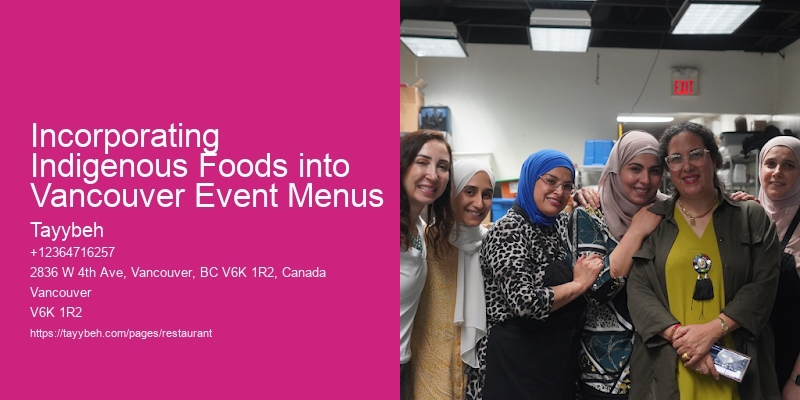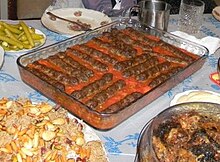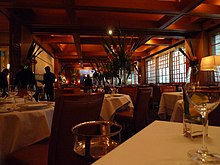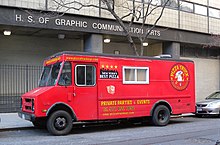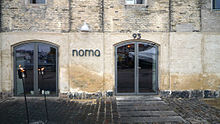The Benefits of Using Indigenous Foods in Vancouver Event Menus
Oh! Explore Delicious Middle Eastern Catering for Vancouver Events here. The charm of Vancouver's event scene isn't just in its stunning venues, but also in the rich culinary experiences it offers. Incorporating indigenous foods into event menus in Vancouver has a bounty of benefits that are too good to overlook (and trust me, you wouldn't want to miss out on these flavors!).
First off, let's talk about the cultural significance. Using indigenous foods is a nod to the traditional lands and the First Nations peoples. It's more than just food; it's a form of storytelling, a way to honor the past and weave it into the present. Guests get a taste, literally, of the local heritage, which ain't something you experience every day!
Now, don't get me wrong, but many of us are trying to be more eco-conscious, right? Well, using local and indigenous foods means the carbon footprint of your event shrinks considerably. The food doesn't have to travel far (which is a win for Mother Earth), and it supports local farmers and producers, boosting the local economy like nobody's business.
Health benefits? Oh, you bet there are plenty! Indigenous foods are often more natural, less processed, and packed with nutrients. They're the kind of foods that make you feel good inside and out, and who wouldn't want that for their event guests?
Let's not forget the unique flavors. Introducing such ingredients can transform a typical menu into an extraordinary culinary adventure. Guests will be raving about the fire-roasted salmon with a side of wild rice and foraged berries (imagine the Instagram posts!).
Yet, one can't deny that there's a bit of a learning curve when cooking with these ingredients. Chefs need to understand the traditional ways these foods were prepared and used, ensuring they're doing justice to the cultural aspects and flavors. But, the effort's worth it, and the outcomes are simply unforgettable.
So, there you have it. Incorporating indigenous foods into Vancouver event menus brings cultural richness, supports sustainability, offers health perks, and delivers an unmatched dining experience. It's an opportunity to showcase respect for the land and its original inhabitants, while also wowing guests with something they might not have tasted before (and that's saying something!).
Challenges and Considerations When Incorporating Indigenous Ingredients
When planning event menus in Vancouver, the idea of incorporating indigenous ingredients is not only intriguing but also a respectful nod to the rich cultural heritage of the land. Catering packages However, it's no walk in the park! There's a whole basket of challenges and considerations to keep in mind.
First off, sourcing these ingredients can be a real head-scratcher. You can't just waltz into any supermarket and expect to find an array of indigenous foods waiting for you. Often, these ingredients are tied to specific regions and seasons (you know, the kind of stuff that's not available year-round). Plus, they're not always grown in quantities that cater to large events. So, finding suppliers who can deliver the goods (and I mean that quite literally) requires a fair bit of legwork.
Then there's the matter of preparation. Indigenous foods aren't just another set of ingredients; they carry with them centuries of tradition.
Incorporating Indigenous Foods into Vancouver Event Menus - Dietary restrictions catering
- Catering delivery services
- Family-style dining
- Seasonal catering
- Event catering trends
- Catering for retreats
- Last-minute catering
- Catering for sports events
- Catering awards
- Vegan catering
- Fundraising events
- Drop-off catering
- Seasonal menus
- Catering companies
- Corporate catering
- Wedding catering
- Culinary events
- Sit-down dinner
- Catering for galas
And, oh boy, let's talk about dietary restrictions and allergies! Just because something is natural doesn't mean everyone can or will eat it. You've got to be aware of potential allergies and have alternatives on hand.
Incorporating Indigenous Foods into Vancouver Event Menus - Sustainable catering
- Client relationship management
- Sustainable catering
- Barbecue catering
- Food and beverage pairing
- Corporate events
- On-site cooking
- Catering industry
- Themed catering
- Mobile catering
- Gourmet catering
- Dietary restrictions catering
- Catering for galas
- Catering business
- Eco-friendly catering
- Catering packages
Of course, there's the big elephant in the room – cost. Indigenous ingredients can be pricier than your garden-variety produce, mainly because they're not mass-produced. Event planners have to juggle the budget without cutting corners on quality or authenticity. It's a delicate balance, one that can give even the most seasoned planner a bit of a headache.
In conclusion, while the incorporation of indigenous ingredients into Vancouver event menus is a commendable pursuit, it's not without its hiccups (and I'm not just talking about the kind after a good meal). It requires a thoughtful approach, an understanding of cultural significance, and a willingness to tackle the practical obstacles that come with it. But, hey, when it's done right, it's an experience that guests won't soon forget!
Successful Case Studies: Vancouver Events Embracing Indigenous Cuisine
In the bustling heart of Vancouver, a culinary revolution is quietly taking root, one that pays homage to the rich tapestry of Indigenous cuisine. It's a tale of innovation and respect, where event planners and chefs are forging paths less traveled and, in doing so, are crafting dining experiences that are not only unique but deeply meaningful.
Take, for instance, the annual gathering of the Canadian Indigenous Leaders Summit. Last year, the organizers decided to take a leap. They sought to immerse attendees in the local culture, not just through speeches and workshops, but through the very essence of sustenance. And what better way to do that than through food? They weren't disappointed!
Incorporating Indigenous Foods into Vancouver Event Menus - Barbecue catering
- Party planners
- Catering for small gatherings
- Client testimonials
- Catering for large groups
- Catered brunches
- Signature dishes
- Catering consultations
- Local ingredients
- Catering for non-profits
- Outdoor catering
- Specialty diets catering
- Creative catering ideas
- Professional chefs
- Catering for birthdays
- Specialty catering
- Local caterers
- Event setup and teardown
- Food safety standards
- Event management
- Catering consultations
But, ah, it's not just grand events that are championing this movement. Smaller venues are also making waves (and, dare I say, with quite the flair). The "Indigenous Eats Food Fest," a local favorite, brings together food enthusiasts from all walks of life. The festival's highlight last season was a cooking demonstration by a renowned Indigenous chef. She showed how bannock, a simple yet staple bread, can be transformed into a base for exquisite canapés. The audience was captivated, and the flavors, they were nothing short of a revelation!
And we mustn't overlook the challenges, right? It's not always easy to introduce new palates to age-old flavors. Some folks are hesitant, clinging to the familiar. But, with every event that dares to showcase Indigenous ingredients, the tide is turning. People are beginning to realize what they've been missing out on.
So, let's raise a glass (or perhaps a handcrafted wooden cup) to the brave culinary pioneers of Vancouver's event scene. They're not merely feeding bodies; they're nourishing souls and mending bridges long overdue for repair. It's a journey of discovery, and with each bite, we're not only tasting but learning, connecting, and, quite frankly, we're loving it!
Working with Local Indigenous Communities and Suppliers
Working with local Indigenous communities and suppliers when incorporating Indigenous foods into Vancouver event menus is no small feat, but it's a journey filled with rich cultural exchanges and delicious opportunities-ah, the flavors that await!
Firstly, let's (and I mean, we must) acknowledge the land. Vancouver sits on the traditional territories of many Indigenous nations. It's only right, then, that event planners and chefs start by building relationships with these communities. It isn't just about ticking a box; it's about genuine engagement and mutual respect. After all, you can't just waltz in and claim knowledge of traditional foods-that's not how it works!
When you're planning an event, you think, "What's on the menu?"
Incorporating Indigenous Foods into Vancouver Event Menus - Gluten-free catering
- Food presentation
- Catering services
- Catering for anniversaries
- Catering delivery services
- Family-style dining
- Seasonal catering
- Event catering trends
- Catering for retreats
- Last-minute catering
- Catering for sports events
- Catering awards
- Vegan catering
- Fundraising events
- Drop-off catering
- Seasonal menus
- Catering companies
- Corporate catering
Now, imagine a menu that sings the song of the land-you've got wild berries that have been hand-picked, seafood that's been sustainably harvested, and game meats that are as fresh as they come!
Incorporating Indigenous Foods into Vancouver Event Menus - Catering packages
- Gluten-free catering
- Party planners
- Catering for small gatherings
- Client testimonials
- Catering for large groups
- Catered brunches
- Signature dishes
- Catering consultations
- Local ingredients
- Catering for non-profits
- Outdoor catering
- Specialty diets catering
- Creative catering ideas
- Professional chefs
- Catering for birthdays
And here's a crucial bit: don't forget to ask for permission. Using traditional recipes and ingredients requires consent from the knowledge keepers.
Incorporating Indigenous Foods into Vancouver Event Menus - On-site cooking
- Catering equipment rental
- Food presentation
- Catering services
- Catering for anniversaries
- Catering delivery services
- Family-style dining
- Seasonal catering
- Event catering trends
- Catering for retreats
- Last-minute catering
- Catering for sports events
- Catering awards
- Vegan catering
- Fundraising events
- Drop-off catering
- Seasonal menus
- Catering companies
- Corporate catering
Oh, and when the big day comes, when those event doors swing open and the guests pour in, you'll see the fruits of your labor. The Indigenous foods on the menu will tell a story-a story of the land, the water, and the people who've been its stewards since time immemorial. It's a story that deserves to be told with honor and pride.
In the end, this isn't just about food; it's about connection and understanding. It's about recognizing the past and embracing a future where we celebrate and uplift Indigenous cultures and traditions. And if we get it right, it's a testament to the beauty of collaboration and respect.
Incorporating Indigenous Foods into Vancouver Event Menus - On-site cooking
- Specialty catering
- Local caterers
- Event setup and teardown
- Food safety standards
- Event management
- Catering consultations
- Community events
- Catering for festivals
- Catering menu
- Party catering
- Event planning
- Food styling
- Private chef services
- Catered events
- Appetizer catering
- Catering equipment rental
- Food presentation
- Catering services
- Catering for anniversaries
Menu Planning and Recipe Development with Indigenous Foods
In the bustling city of Vancouver, where the culinary scene is as diverse as its population, there's been a growing movement to bring something truly unique to the table - Indigenous foods. Menu planning and recipe development with these traditional ingredients ain't just a nod to the past; it's about weaving a rich cultural tapestry that honors the First Nations peoples and their ancestral lands. Oh, and it's about tantalizing taste buds too!
Now, imagine you're gearing up for a grand event in Vancouver (can't just be any ol' gathering, right?). You want to impress your guests, not just with fancy decor or smooth jazz, but with a menu that shouts "This is British Columbia!" without saying a word. That's where Indigenous foods come into play. But hold on, it's not as simple as tossing some salmon onto a cedar plank - though that's a darn good start.
You see, incorporating Indigenous foods into event menus requires a delicate balance. You have to respect the traditional ways (we can't forget those), while also adapting recipes for modern palates and event scales. Sustainable catering This is where chefs might scratch their heads a bit.
Incorporating Indigenous Foods into Vancouver Event Menus - Food and beverage pairing
- Specialty diets catering
- Creative catering ideas
- Professional chefs
- Catering for birthdays
- Specialty catering
- Local caterers
- Event setup and teardown
- Food safety standards
- Event management
- Catering consultations
- Community events
- Catering for festivals
- Catering menu
- Party catering
- Event planning
- Food styling
- Private chef services
- Catered events
- Appetizer catering
- Catering equipment rental
Let's not forget the storytelling aspect. Each dish has a tale, rooted in the deep heritage of the land.
Incorporating Indigenous Foods into Vancouver Event Menus - Catering industry
- Catering for birthdays
- Specialty catering
- Local caterers
- Event setup and teardown
- Food safety standards
- Event management
- Catering consultations
- Community events
- Catering for festivals
- Catering menu
- Party catering
- Event planning
- Food styling
- Private chef services
- Catered events
- Appetizer catering
- Catering equipment rental
Consider the humble Saskatoon berry. This little fruit's been around long before any of us, and it's packed with flavor. Turn it into a compote, a glaze for wild game, or even a dessert that'll have your guests asking for seconds - and the recipe! And that's just one example!
Incorporating Indigenous Foods into Vancouver Event Menus - Catering for galas
- Food presentation
- Catering services
- Catering for anniversaries
- Catering delivery services
- Family-style dining
- Seasonal catering
- Event catering trends
- Catering for retreats
- Last-minute catering
- Catering for sports events
- Catering awards
- Vegan catering
- Fundraising events
- Drop-off catering
- Seasonal menus
Ah, but there's a catch (isn't there always?). Not every guest will be familiar with these flavors, and that's where the negation comes in. You can't assume everyone's going to be on board from the get-go. It's up to you - or the savvy chef you've teamed up with - to introduce these foods in a way that's both exciting and accessible. Think of it like a culinary adventure; you're the guide, and you want everyone to enjoy the journey.
In conclusion, menu planning and recipe development with Indigenous foods for Vancouver event menus is an art form that's as challenging as it is rewarding. It's about honoring the past, embracing the present, and creating a future where these foods are not just a novelty, but a staple.
Incorporating Indigenous Foods into Vancouver Event Menus - Mobile catering
- Catering business
- Eco-friendly catering
- Catering packages
- High-end catering
- Gluten-free catering
- Party planners
- Catering for small gatherings
- Client testimonials
- Catering for large groups
- Catered brunches
- Signature dishes
- Catering consultations
- Local ingredients
- Catering for non-profits
- Outdoor catering
Training Staff and Educating Guests on Indigenous Food Practices
In the bustling city of Vancouver, where the gastronomic scene is as diverse as its population, the idea of incorporating indigenous foods into event menus is not only innovative but also essential for cultural education and sustainability. But, ah, there's a catch! It's not enough to just plonk these ingredients onto a plate; we must understand the traditions and practices behind them. That's where training staff and educating guests come into the picture - and yes, it's a picture worth more than a thousand words!
Firstly, let's talk about training the staff. (Oh, and trust me, it's not as easy as it sounds!) The chefs and servers need to be well-versed in the history and significance of the indigenous foods they're working with. This isn't just about knowing that salmon is a staple; it's about understanding the sustainable fishing practices that Indigenous Peoples have perfected over millennia. It's about realizing that when you serve bannock, you're not just serving bread, but you're sharing a piece of culture, kneaded and baked with stories and traditions.
Now, onto educating guests - this is where it gets even more exciting!
Incorporating Indigenous Foods into Vancouver Event Menus - Food and beverage pairing
- Catering companies
- Corporate catering
- Wedding catering
- Culinary events
- Sit-down dinner
- On-site cooking
- Catering industry
- Themed catering
- Mobile catering
- Gourmet catering
- Dietary restrictions catering
- Catering for galas
- Catering business
- Eco-friendly catering
- Catering packages
- High-end catering
- Gluten-free catering
However, let's not pretend (because pretense is the enemy of authenticity) that everyone will be on board from the get-go. There will be those who question the unfamiliar flavors or who balk at the idea of foraged greens. But that's exactly why we can't shy away from the challenge! High-end catering We've got to engage with guests, answer their questions, and maybe even pique their curiosity enough that they'll want to delve deeper into indigenous food practices themselves.
The road to truly honoring and integrating Indigenous foodways into Vancouver's event scene is indeed long and winding, and it's certainly not free of bumps or potholes.
Incorporating Indigenous Foods into Vancouver Event Menus - Food and beverage pairing
- Catering for sports events
- Catering awards
- Vegan catering
- Fundraising events
- Drop-off catering
- Seasonal menus
- Catering companies
- Corporate catering
- Wedding catering
- Culinary events
- Sit-down dinner
- Mobile catering
- Gourmet catering
- Dietary restrictions catering
- Catering for galas
- Catering business
- Eco-friendly catering
- Catering packages
- High-end catering
Future Trends: The Growing Popularity of Indigenous Foods in Event Catering
Oh, have you noticed? There's a wave, no, a tide of change in the culinary scene of Vancouver's event catering, and it's one that's been long overdue! Catering industry The growing popularity of indigenous foods is transforming event menus, and let me tell you, it's about time we embraced these flavors that are as authentic as they are delightful.
Now, incorporating indigenous foods ain't just about throwing in a few traditional dishes here and there. Nah, it's a whole movement, a celebration of the rich culture and heritage that's been here way before any of us. Event planners and caterers, they're getting creative (and it's about time, isn't it?), they're learning from the indigenous communities, and they're sourcing local ingredients that speak to the land's history. That's respect, and it's beautiful to see.
Picture this: you're at a fancy gala in Vancouver and you're served a dish that's bursting with flavors you can't quite place, but it tastes like, well, like it's homegrown. That's because it is! It's not just salmon on your plate; it's salmon that's been prepared using traditional methods, seasoned with foraged herbs that you probably can't find at your local supermarket. It's not just about eating; it's an experience, a journey through the past, present, and what we hope is a sustainable future.
And don't get me started on the health benefits! Indigenous foods, they're not processed to death, and they're often packed with nutrients. We're talking about food that's good for your body and your soul (and we could all use a bit of that, couldn't we?).
But, let's be real, not everyone's on board yet. Some folks are hesitant to try new things, clinging to their comfort foods like a life raft. But that's not stopping the trend. No, sir! Caterers are finding ways to introduce indigenous ingredients subtly, mixing them into familiar dishes. It's kinda like sneaking veggies into a kid's meal, but for grown-ups, right?
So, next time you're at an event in Vancouver, take a gander at the menu. If you see bannock, wild rice, or maybe some Saskatoon berry pie, give it a try! It's more than just food; it's a way to honor and celebrate the indigenous cultures that have nourished this land for centuries.
In conclusion, the incorporation of indigenous foods into Vancouver's event catering menus is not just a passing fad; it's a profound shift towards a more inclusive and authentic culinary culture. It's about time we all got a taste of it, don't you think?
